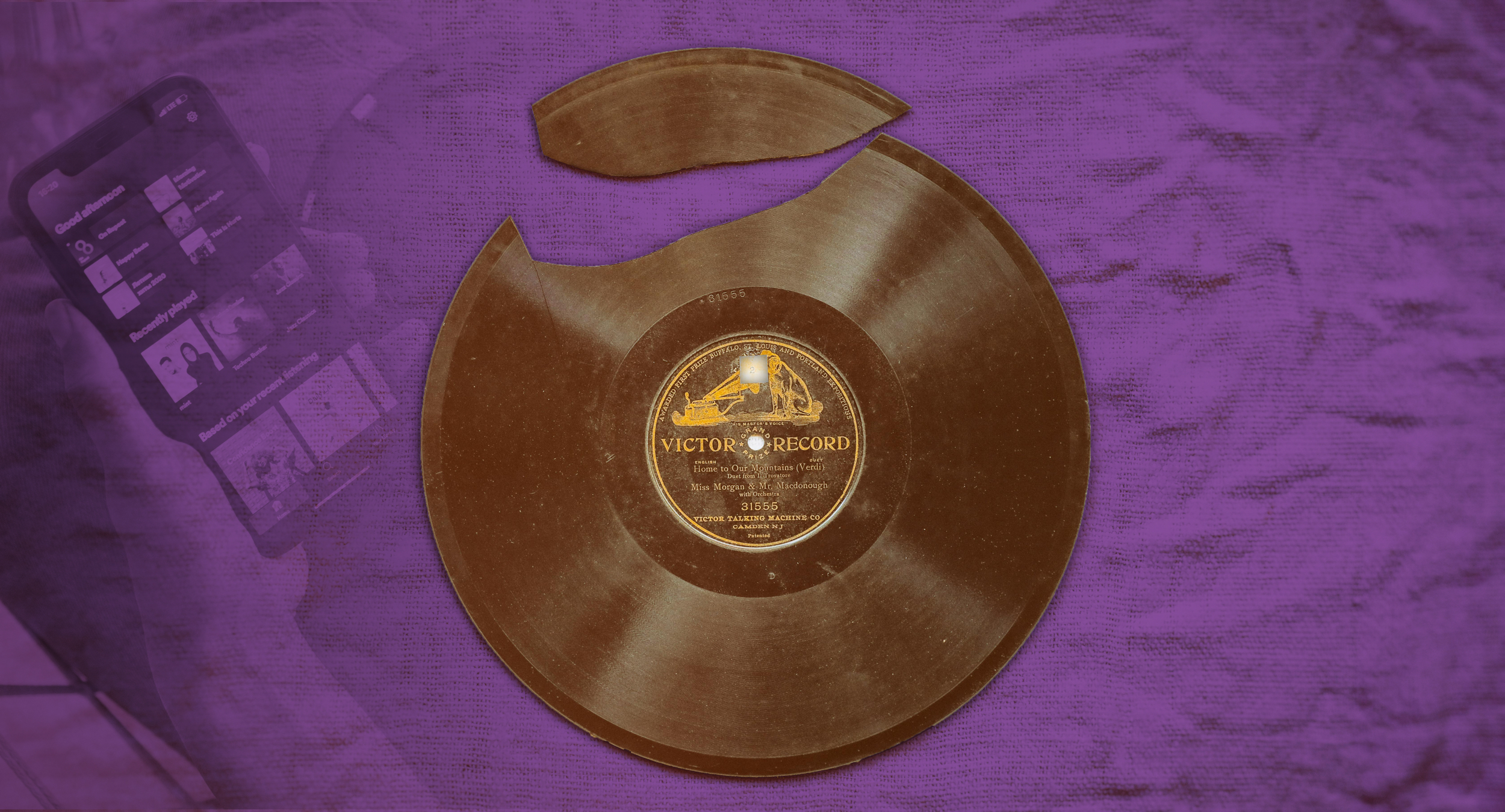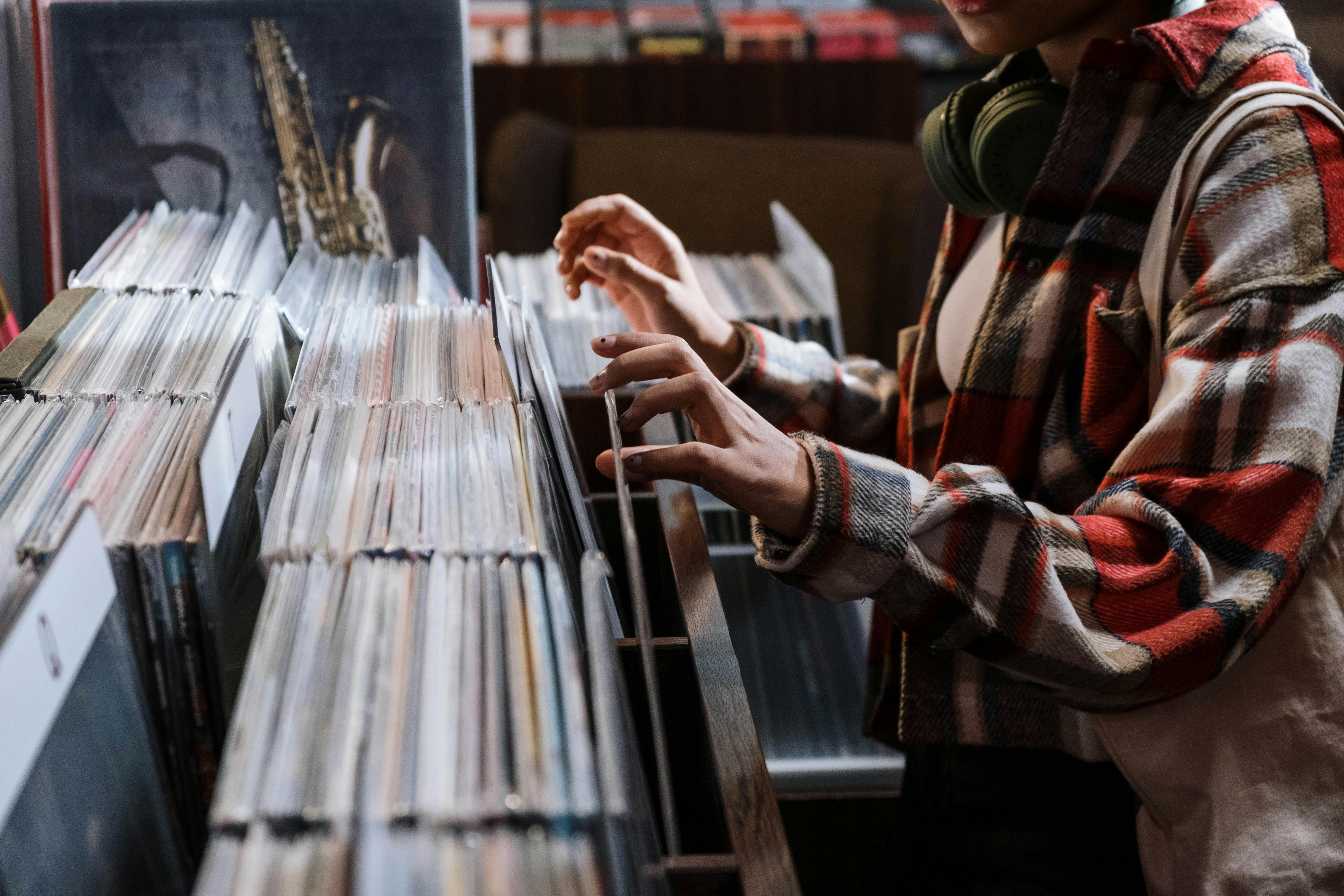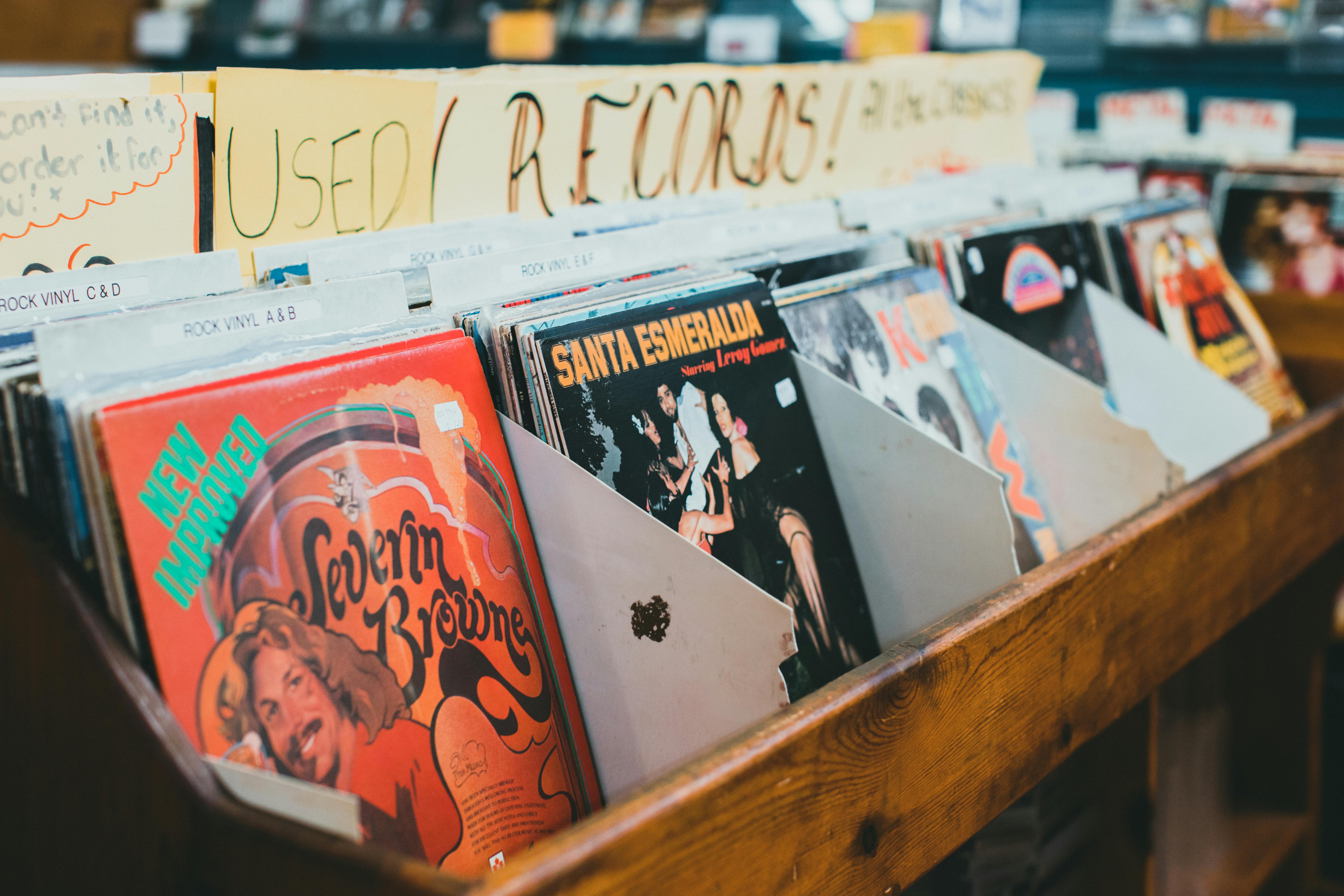Liner Notes: Cayle Sharratt of Share It Music

Treating music like it's disposable hurts us just as much as it hurts artists

Spend enough time with creative types, and you’re bound to hear the phrase “style is defined by limitations.” It’s a maxim that’s generally used to help someone feel better about the way their particular style is defined by their particular limitations, and it’s often helpful enough in that respect. But limitations define much more than a person’s creative expression; in fact, I tend to think they have as much to do with how we consume art — and the degree to which we truly absorb it — as they do with how it’s made.
For many decades, music was consumed largely through the purchase of physical product. Sure, we had the radio, and eventually MTV, and both of those were effective delivery mechanisms for the mainstream releases that were deemed sufficiently marketable to enter some level of medium-to-heavy rotation. But if you really loved music, that wasn’t enough — you were always waiting to hear the next thing that lit you up and sent you off to a local record emporium in the hopes that whatever you were jonesing for was actually on the shelves.
But this hunger for new sounds was defined by limitations. You needed money, first of all, so whatever ended up in your collection was always at least partly defined by your budget. Time and transportation were other factors: Fans who happened to live in rural areas starved for record stores found far slimmer pickings than those who were lucky enough to be in areas with multiple shops to choose from. Access to the right gatekeepers was a big deal, too — without a great local radio station, vibrant alt-weekly, or trusted friend or relative to point you in the right direction, your journey of discovery was essentially over before it had even begun.
But as frustrating as these limitations were, and as much as avid listeners struggled against them, they also had an enriching effect. If your budget only allowed for a certain number of purchases, you were that much more likely to actually spend time with the music you bought, even if it didn’t blow you away at first. In the pre-CD era, skipping tracks entailed precision needle-dropping or fast-forwarding; after awhile, it often started to feel like more trouble than it was worth, and as a result, we just let the record play, and learned to love songs we initially dismissed. Similarly, if you spent time traveling to and from the store, you were also more inclined to sit with your purchase for an extended period, because the investment of time demanded a return.

This all brings us back to the purchase of physical product, because when you did sit with your purchase, you weren’t just listening to music — you were engaging with a totem, one that became mentally and emotionally tied to the experience. Whether you simply unwrapped the thing and made room for it on a shelf, or you were the type of listener who’d pore over the liner notes to learn who played on what, who wrote the songs, and learn the lyrics, the product went part and parcel with its contents. The artwork was part of its character. The tactile experience of handling the album, cassette, or CD seeped into your memories of the music. It’s the summer of 2025 as I write this, and when I think about Eric Clapton’s Journeyman album, I can still smell the uniquely blue-ribboned cassettes that Reprise was known for during that era — and mind you, that record isn’t a personal favorite by any stretch. This stuff just got baked into the way we internalized music.
All of this may seem as though it’s intended to idealize the pre-streaming listening experience, but there were plenty of drawbacks too. First and foremost, for any music lover, every trip to the record store was a painful reminder that you’d never have enough money — or storage space — to hear everything you wanted to hear. And you wanted to hear, well, everything: Even if a lot of it would never be actively enjoyed, it still rankled to know there were entire lifetimes’ worth of music out there, tantalizingly out of reach.
You probably know where I’m going with this by now, so I’ll just cut to the chase.
The advent of the streaming era has opened up vast repositories of music to anyone with internet access, but only by striking a devil’s bargain that removed the limitations that vexed us and replaced them with a frictionless listening experience that has made music more pervasive than ever while also diminishing its place in the cultural landscape and making it less commercially viable for artists in the process. By and large, we’ve gone from consuming music passionately to ingesting it passively, and the folks running the streaming platforms are the only ones who’ve benefited.
Much has been written lately about why music streaming services — particularly Spotify — are less than they’re cracked up to be. There are sociopolitical reasons for avoiding them, there are economic reasons for fans who want to support artists, and there are purely artistic reasons for listeners concerned about AI slop creeping into playlists. In some respects, these issues are just the latest manifestation of the many ways in which the tension between art and commerce has been eagerly exploited for commerce’s gain since the dawn of the music industry; in others, they point to a potentially troubling paradigm shift in the way we, as a culture, value an art form that has forever been vital to the human experience.

Are you listening to music as you read this?
Do you know the name of the act you’re listening to?
Or the name of the song?
If you answered “yes” to all three of those questions, then I applaud you. But odds are high that at some point, you’ve availed yourself of the algorithm to the extent that you’ve allowed it to keep feeding you music, unattended, while you focus on other things. In some ways, this technology is a blessing; in others, it’s robbed us of the lasting joy that comes from actively choosing our musical diet, and actively engaging with it as it’s consumed. By removing the barriers — the friction — between ourselves and that world of sound, streaming has made music feel as common as air. Instead of serving as a gateway to lasting relationships with songs, albums, and artists, it has weakened the bond between the art and the audience, turning an act of communion into passive consumption.
This isn’t true across the board, of course. I’m sure you’ve found plenty of new favorites through streaming, and may have been motivated to purchase albums after hearing them through a streaming platform first. Anecdotally speaking, I can tell you that music is deeply important to both of my teenage children, and all they do is stream; the younger is a brilliant musician in her own right who has managed to pan nuggets of algorithmic gold, while the older has at least one tattoo inspired by his favorite band. It certainly isn’t impossible to form those bonds via streaming. It’s a lot harder than it was, though.
It seems wildly unlikely that streaming is going anywhere, or that the terms of service for artists will do anything but worsen over time. For Spotify in particular, there’s little incentive to do anything meaningful to enhance the user experience; in fact, as the brilliant Ed Zitron has so eloquently argued, tech giants across the board have long since stopped trying to truly serve their consumers. Streaming platforms simply aren’t in the business of deepening your connection to the product — the real goal is to command as many units of your attention as possible, and the way to do that is to create an ecosystem that’s just frictionless enough to keep you from tuning out. The more of those units they can point to, the happier shareholders are. The fact that this has made it exponentially more difficult for musicians to earn a living — and trained generations of listeners to treat music like a buffet that’s been designed to be endlessly, mindlessly gorged on — is not their concern.
Clearly, it’s on us to heal what’s broken. So, given all of the above, what can we do?
Option one, of course, is to simply not use streaming platforms. This works perfectly well for a number of people, and given everything we know about how these platforms operate — specifically, the microscopic artist royalty rates they depend on in order to stay afloat — it’s pretty clear that it’s the most ethically defensible choice. On the other hand, people used to make similar arguments against home taping and purchasing used CDs, and while these are absolutely not perfectly analogous comparisons, I think they’re close enough to be part of the same conversation. There’s something proudly futile about standing against a technological tide that can’t be turned; take it from a guy who loudly refused to purchase CDs until the early ‘90s because they were destroying album artwork.

Another option is to recognize that streaming, like AI, is a tool whose versatility and efficacy has been wildly oversold for reasons having nothing whatsoever to do with its actual utility. Use the tool thoughtlessly, and you’re liable to harm yourself, others, and perhaps even the planet — but if you use it carefully and with intention, it can deliver solid results. The problem with this approach is that streaming wasn’t designed to be used thoughtfully. Part of it has to do with pure human nature; if you’re using an app that you know will give you instant access to a significant chunk of all the music that’s ever been commercially released, you are absolutely going to be more inclined to skip around on a whim. And because what you’re hearing isn’t connected to anything more tactile than the smooth surface of your screen, it’s that much easier to become distracted by any number of other demands on your attention. Before you know it, whatever you hit “play” on is over, the artist has made an eighth of a penny, and the algorithm has ushered you on to the next thing — which, incidentally, probably sounds an awful lot like the last thing.
The perils and pitfalls of all this are, of course, a big part of what we’re trying to remedy here, which leads us, finally and conveniently, to the heart of Harmonic’s mission. The absurd abundance of listening options at an incredibly reasonable (for the consumer) price point is part of what has lured people into streaming, but why do we want access to all that music? Partly because we’re gluttonous creatures, but mainly because we’re all constantly searching for the next new thing that will fill us with delight. The largely hollow promise of algorithmic discovery is that if you can just train the damn thing to know enough about what you like, it’ll start serving up dopamine rushes on the regular, instead of guiding your listening in concentric circles that are peppered with increasing amounts of ghost artists and AI slop.
The answer, then, is to return control to where it always belonged — human hands. It isn’t a solution that (ugh) scales to the degree that makes venture capitalists and shareholders happy, but that’s fine; as we’ve seen time and time again, whenever “scale” becomes the focus for artistic endeavors, the tension between art and commerce devolves into a flat-out war, and only the vultures win. Instead of prioritizing growth, we need to be focusing on community — honoring the reality that, as old-fashioned and unsexy as it might sound to some, the most effective mode of discovery has always been someone you trust saying “You have got to hear this.”
This is how, in our own small way, we’re trying to heal what’s broken. The streaming tide is probably too powerful to stem, but it’s possible to divert listeners into quieter coves. Places where we can rebalance the royalty split in favor of artists while also incentivizing thoughtful recommendations from real people. It’s an approach that’s defined by its limitations — but within those limitations, the possibilities are endless.